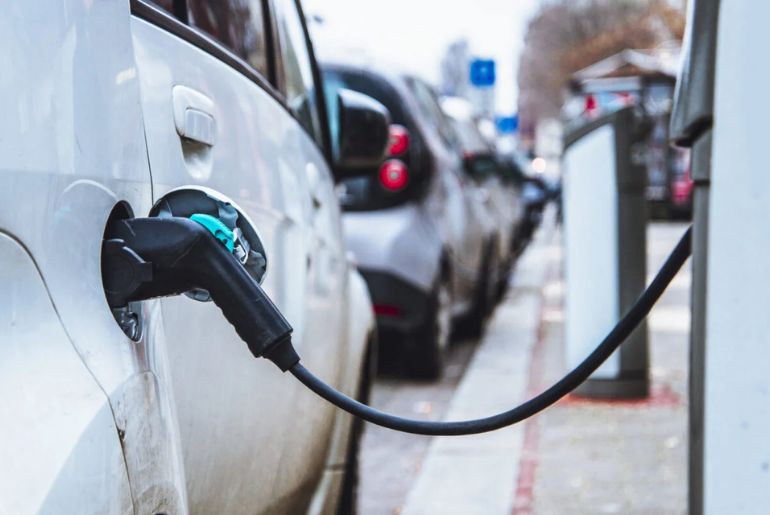The transition to electric vehicles (EVs) is revolutionizing transportation, offering a cleaner and more sustainable alternative to traditional internal combustion engine vehicles. While the electrification of passenger cars is advancing rapidly, the heavy-duty vehicle segment, including trucks, buses, and industrial vehicles, presents unique challenges. A critical aspect of this transition is the development of high-capacity chargers capable of meeting the substantial energy demands of heavy-duty EVs. These chargers play a pivotal role in ensuring the viability of electric heavy-duty fleets but face several technical, economic, and infrastructural hurdles.
Energy Demands of Heavy-Duty EVs
Heavy-duty EVs require significantly more energy than their light-duty counterparts due to their larger size, weight, and operational demands. For instance, a fully electric truck may need batteries with a capacity exceeding 500 kWh, compared to 50-100 kWh for most passenger EVs. High-capacity chargers must deliver substantial power—often upwards of 500 kW—to charge these vehicles within a reasonable time frame.
This increased demand underscores the need for innovations in charger design, grid infrastructure, and energy management to support the growing fleet of heavy-duty EVs.
Challenges in Developing High-Capacity Chargers
- Power Delivery and Grid Infrastructure
Delivering the immense power required by high-capacity chargers poses a significant challenge for existing grid infrastructure. Heavy-duty EVs charging at high rates can draw as much electricity as a small industrial facility, potentially overloading local power networks. Upgrading grid infrastructure to handle these loads requires substantial investment in transformers, substations, and transmission lines.
Additionally, the intermittent nature of charging heavy-duty EVs can create grid stability issues, particularly if multiple vehicles charge simultaneously during peak demand hours.
- Heat Management and Efficiency
High-capacity chargers generate significant heat due to the large amounts of electricity they handle. Managing this heat efficiently is essential to prevent damage to charging equipment and ensure safety. Advanced cooling systems, such as liquid cooling, are often required, but these add complexity and cost to the charger design.
Efficiency is another critical consideration. High-capacity chargers must minimize energy losses during charging to maximize the effective delivery of electricity to heavy-duty EVs. Even small inefficiencies can lead to significant energy waste given the scale of power involved.
- Connector Design and Standardization
The connectors used for high-capacity chargers must withstand high currents and voltages while remaining safe, durable, and easy to use. Developing connectors that meet these requirements is a technical challenge, particularly as charging power levels exceed 1 MW for ultra-fast charging.
Standardization is equally important to ensure compatibility between chargers and heavy-duty EVs from different manufacturers. Organizations like the CharIN consortium are working to establish standards, such as the Megawatt Charging System (MCS), but achieving widespread adoption takes time.
- Cost and Scalability
The high cost of developing, installing, and maintaining high-capacity chargers is a significant barrier to widespread adoption. Advanced technologies, cooling systems, and grid upgrades all contribute to the expense. Scaling these solutions to support the growing population of heavy-duty EVs adds another layer of complexity, particularly in remote or underserved areas where infrastructure development is more challenging.
- Charging Speed vs. Battery Longevity
While high-capacity chargers enable faster charging for heavy-duty EVs, frequent ultra-fast charging can accelerate battery degradation. This trade-off poses a dilemma for fleet operators who must balance operational efficiency with long-term battery health.
Developing battery technologies and charging protocols that mitigate degradation without compromising charging speed is a critical area of research.
- Location and Accessibility
Heavy-duty EVs, such as trucks and buses, often operate on fixed routes or in industrial settings, requiring strategically located high-capacity chargers. Installing chargers at key logistics hubs, depots, and along highways is essential for uninterrupted operation.
However, ensuring sufficient space, power availability, and easy access for large vehicles complicates the planning and installation process.
- Renewable Energy Integration
Integrating renewable energy into the charging process is vital to minimize the carbon footprint of heavy-duty EVs. High-capacity chargers must be designed to work seamlessly with renewable energy sources, such as solar or wind power, and incorporate energy storage systems to manage variability.
This integration requires sophisticated energy management systems and significant upfront investment, which can slow adoption.
Innovations to Address Challenges
Several innovations are helping to overcome the challenges of high-capacity chargers for heavy-duty EVs:
- Smart Charging Systems: Intelligent algorithms and demand-response systems can optimize charging schedules, reducing peak loads and enhancing grid stability.
- Battery Thermal Management: Advances in battery technology and cooling systems are improving the durability and efficiency of heavy-duty EV batteries under high-power charging conditions.
- Megawatt Charging Systems (MCS): The development of MCS standards is streamlining connector design and ensuring compatibility across heavy-duty EVs, accelerating deployment.
- Renewable-Powered Charging Hubs: Combining high-capacity chargers with on-site renewable energy generation and storage solutions can reduce reliance on the grid and support sustainable energy goals.
- Wireless Charging: Dynamic wireless charging, which allows vehicles to charge while in motion, is being explored as a potential solution for heavy-duty EVs, reducing downtime and infrastructure requirements.
The Road Ahead
High-capacity chargers are a cornerstone of the transition to electric heavy-duty vehicles. As technology evolves, these chargers will become more efficient, cost-effective, and widely accessible, enabling the large-scale deployment of heavy-duty EVs.
Collaboration among governments, utilities, vehicle manufacturers, and technology providers will be essential to address the challenges of developing and deploying high-capacity chargers. Policy incentives, public-private partnerships, and targeted investments in R&D can accelerate progress and ensure the successful electrification of the heavy-duty sector.
Conclusion
The development of high-capacity chargers for heavy-duty EVs is both a challenge and an opportunity. While technical and infrastructural hurdles remain, innovations in power delivery, energy management, and renewable integration are paving the way for a cleaner and more sustainable transportation future. As heavy-duty EVs become more prevalent, high-capacity chargers will play a critical role in supporting their adoption and ensuring the seamless operation of electric fleets, driving the global shift toward greener mobility.

